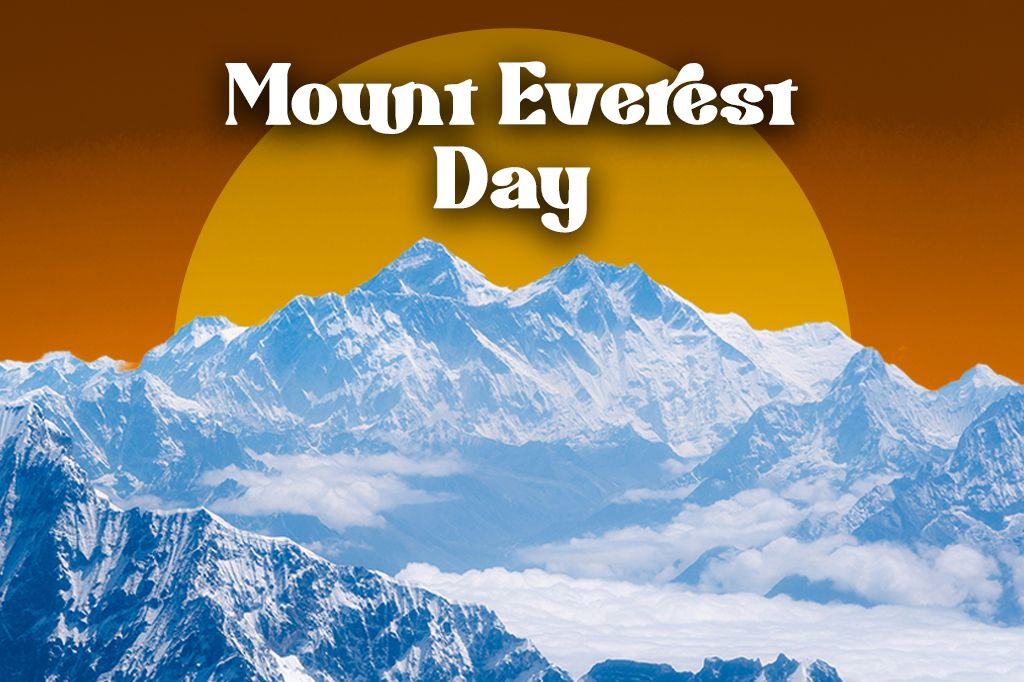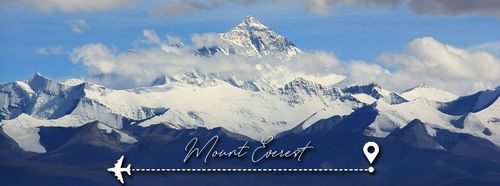What Mount Everest Day Teaches Us About Humanity, Nature, and Ambition
Claudia•Apr 24, 2025
Each year on May 29, Mount Everest Day invites us to look beyond just the staggering height of the world’s tallest peak and into the deepest layers of our emotional, environmental, and cultural connection to it.
But what can one mountain teach us about our own limits and the cost of chasing greatness? This article explores seven thought-provoking questions that go beyond the summit, bringing you insights on what Mount Everest truly represents.

Picture by Andreas Gäbler on Unsplash
When is Mount Everest Day?
Mount Everest Day is observed on May 29 to commemorate the day in 1953 when Sir Edmund Hillary of New Zealand and Tenzing Norgay, a Sherpa of Nepal, became the first confirmed climbers to reach the summit of Mount Everest. Their achievement marked not only a physical conquest but a huge milestone for all of humankind.
Where Exactly Is Everest?
Mount Everest is in the Himalayas, on the border between Nepal and Tibet. Precisely, nestled within the Mahalangur Himal subrange of the Himalayas, its peak pierces the “death zone,” where the atmosphere thins to an unbreathable level. Likewise, temperatures plummet, and winds rage, which is a cruel test of the limits of human endurance. Only the most determined mountaineers, equipped with bottled oxygen, can attempt to conquer this frigid realm.
More than a geographical landmark, Everest represents international collaboration, the economic backbone of communities, and the pinnacle of human resilience. Since the first climb, it has been a beacon of adventurous spirit, human strength, perseverance, and the thrill of exploration.
-
On the Nepal side, Everest fuels an entire tourism economy, providing livelihoods for Sherpas, porters, guides, and local businesses.
-
On the Tibetan side, the mountain has been a quieter front due to restrictions on access and media.

Who Really Conquered Everest First?
Edmund Hillary, a beekeeper from New Zealand, and Tenzing Norgay, a Nepali Sherpa, were the first climbers to conquer Mount Everest — but hundreds tried before them.
George Mallory and Andrew Irvine, who disappeared in 1924 during an ascent attempt, remain the subject of debate. Did they reach the summit before vanishing into legend? Their mystery is part of Everest’s allure.
As for Hillary and Norgay, their climb crowned decades of failed attempts. Hillary, a beekeeper turned adventurer, went on to explore the poles. Norgay’s achievement was even more transformational. Once relegated to the role of helper, he became a national icon and changed global views on the Sherpa community. His legacy endures not just on plaques but in the pride of a people who have been overlooked for too long.
Their success served as a stark reminder of the challenges of climbing such dangerous mountains. Only the bravest and resilient like Edmund and Tenzing can surpass their own limits. Not in vain, stories of Everest expeditions highlight these traits, with tales of inspiring successes and tragic losses, showing just how unforgiving the mountain can be.

Photo by Prabin Sunar
What Does It Feel Like to Climb Everest?
Altitude sickness. Sleep deprivation. Emotional disorientation. Climbing Everest isn’t just physically punishing. It’s psychologically taxing.
Veteran climbers speak of hallucinations, moral dilemmas, and overwhelming guilt. The joy of reaching the top is often shadowed by trauma or loss. Breathing without oxygen becomes nearly impossible. Brain cells can die from a lack of air.
Would you dare to climb Mount Everest knowing this? While the views might be breathtaking, your body would be under immense stress. Headaches would throb, sleep would be elusive, and dizziness might make every step a challenge. Even breathing would become a struggle, leaving you breathless and exhausted.
The physical toll is just part of it. Everest demands emotional stamina, moral clarity, and the ability to face mortality —yours and others’.
How Everest Is Drowning in Its Own Popularity
Everest’s beauty masks an urgent crisis. It has earned the nickname “the world’s highest garbage dump.”
Tons of discarded equipment, such as empty oxygen tanks, abandoned tents, food envelopes, and various debris litter the mountain. Some estimates throw a staggering 30 tons!
It isn’t an aesthetic blemish, but a serious threat to the health of the local communities. The waste pollutes the water sources they rely on and harms their well-being. But the environmental effects go further than just trash.
The influx of visitors has also put a lot of pressure on the nearby resources. For example, forests are disappearing as they’re cut down for campfires, and traditional clothing and food are being replaced by mass-produced goods. Overall, all of these raise worries about losing culture and harming nature.

Photo by Ananya Bilimale on Unsplash
Are we addressing the issue? Not enough, in my opinion.
Each year, clean-up expeditions try to remove tons of trash left behind by climbers. Nepal also requires climbers to take down at least 8kg of their own waste. However, enforcing these rules is difficult, and the mountain’s environment is still at risk.
The truth is, Everest’s growing popularity is contributing to its own destruction, and that of local cultures. Sherpas and others living near Everest are seeing their cultural practices change or fade as tourism continues to increase.
If we celebrate Everest, we must also protect it.
Why Everest Is Sacred Long Before It Became a Bucket-List Item
Long before climbers arrived, Everest —known as Chomolungma to Tibetans and Sagarmatha to Nepalis— was (and still is) considered sacred. They revere the mountain as a sacred place inhabited by Miyolangsangma, a Tibetan Buddhist goddess who represents infinite generosity. According to their beliefs, in the beginning, it was feared as a terrifying demon, but it transformed thanks to a Buddhist master.
True respect for Everest means understanding the spiritual lens through which it is viewed by those who grew up in its shadow.

Photo by The Nepal Trekking Company
How is Mount Everest Day Observed?
Every year, Nepal celebrates under the towering presence of its renowned mountain, paying tribute to Everest’s storied past and breathtaking beauty, and also highlighting the captivating world of Himalayan tourism. Climbers who’ve braved the peak share their stories alongside government officials and local businesses.
In Kathmandu, Mount Everest Day includes parades, speeches by climbers, and honors for local guides. In the Khumbu region near Everest, villages host prayer ceremonies and cultural events.
But beyond Nepal, the day is under-recognized. That’s a missed opportunity. Everest is more than a peak, but a global symbol. Sharing its stories can inspire resilience, respect for nature, and a deeper appreciation of the people who make such feats possible.
Climbing Everest Isn’t the Only Way to Honor It
You don’t need to scale Everest to respect what it represents. You can honor it by:
-
Supporting ethical trekking companies
-
Learning Sherpa history
-
Advocating for sustainable tourism
-
Or simply sharing the deeper story of Mount Everest Day
The real summit is understanding.
If this guide sparked your curiosity or ignited a deeper respect for the world’s highest peak, you’re already part of Everest’s legacy.
And for those heading to Nepal or the Himalayas, it’s worth knowing that staying connected, informed, and safe is part of the modern explorer’s toolkit. A smart, traveler-friendly way to stay online without the burden of roaming charges is through a Yoho Mobile’s free eSIM trial and get instant access to mobile data in over most countries. No SIM card, no contracts—just a quick setup and you’re online in minutes. If you want to get your eSIM plan afterwards, use the code YOHO12 at checkout for a 12% discount!
